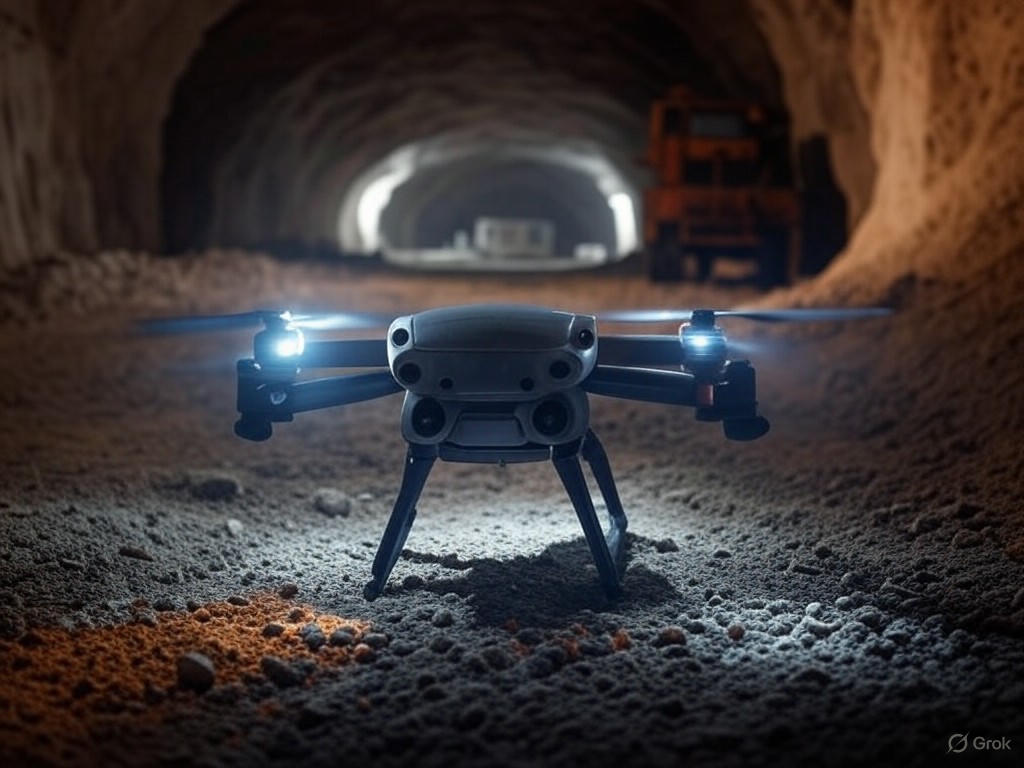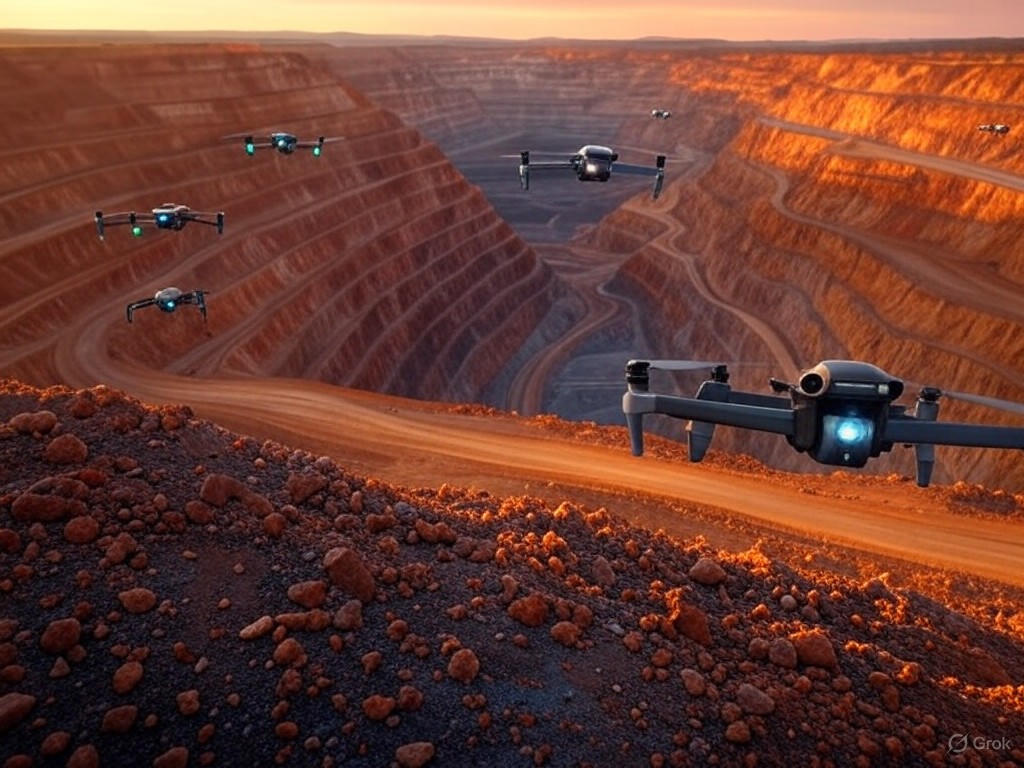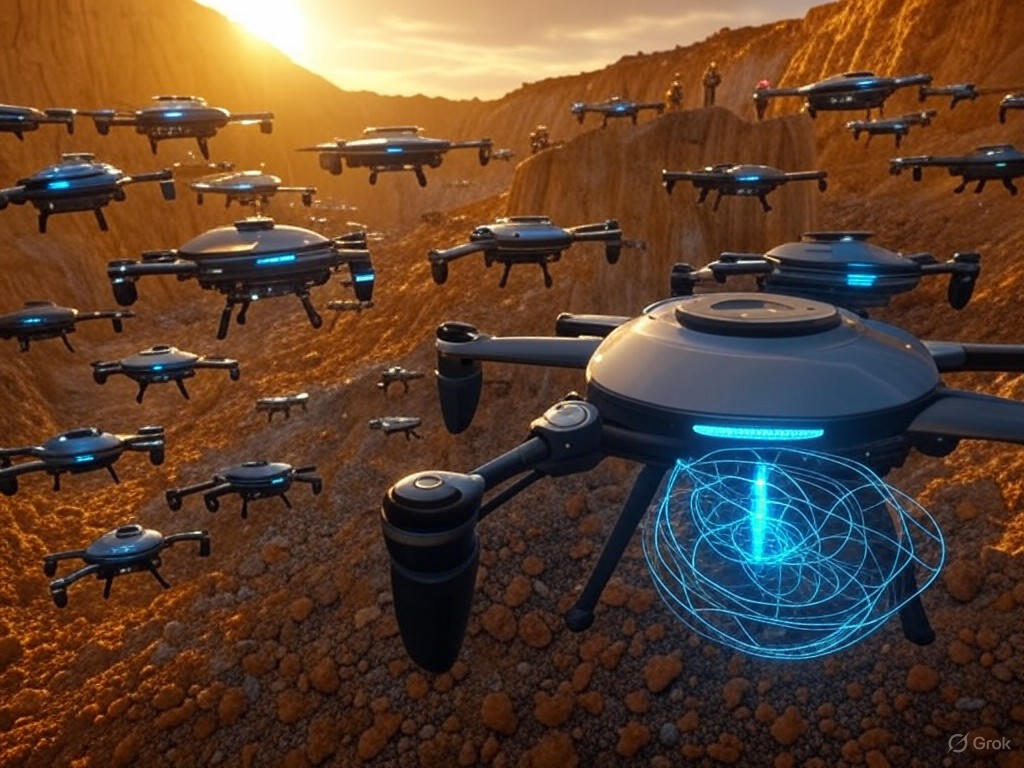Autonomous Drones in Mining: Efficiency Gains
In the vast, unforgiving expanses of America's mining heartlands, where the earth yields its treasures at great cost, a new player has taken to the skies. Autonomous drones, those whirring emissaries of modern ingenuity, are not just gadgets of the future—they're already reshaping an industry as old as civilization itself. Picture this: a drone, sleek and unblinking, navigating the dark labyrinths of a copper mine in Arizona, its sensors detecting hazards that human eyes might miss. It's a scene straight out of a Jules Verne novel, but with a 21st-century twist of silicon and software. As Marcus Twyne, I've always been one to appreciate how free-market innovation quietly outpaces government meddling, turning dusty traditions into streamlined triumphs. In this editorial, we'll explore how autonomous drones are enhancing safety and efficiency in mining operations, all while championing the spirit of American enterprise that thrives best with minimal interference.
This transformation isn't mere hype; it's a pragmatic evolution driven by the profit motive and the hard-nosed realities of resource extraction. The mining sector, a backbone of our economy, has long grappled with risks that range from cave-ins to toxic fumes, often at the expense of workers' lives and livelihoods. Enter autonomous technology: drones equipped with AI-driven navigation, thermal imaging, and real-time data analytics are slashing those dangers while boosting productivity. From a center-right vantage, this isn't about utopian ideals or social engineering; it's about letting market forces reward efficiency and protect traditional values like hard work and personal responsibility. Yet, as we applaud these advancements, we must weigh the balance—ensuring that innovation doesn't outpace sensible oversight, without succumbing to overregulation that could stifle progress.
The Rise of Autonomous Drones in Mining: A New Era of Efficiency
Autonomous drones have swiftly become indispensable tools in mining, transforming routine tasks into precise, data-driven operations. Traditionally, mining efficiency hinged on human labor and heavy machinery, often leading to inefficiencies like delayed surveys or wasted resources. Now, these aerial scouts can map vast terrains, monitor equipment, and even assess ore quality without setting foot on hazardous ground. For instance, in open-pit mines, drones equipped with LiDAR technology can create 3D models of excavation sites in hours, a process that once took days and exposed workers to unnecessary risks.
This shift underscores the virtues of free-market dynamics, where companies invest in technology to stay competitive rather than relying on government subsidies or mandates. A report from the Wall Street Journal highlights how firms like Rio Tinto have integrated drone fleets to reduce operational costs by up to 20%, all while maintaining a lean workforce. It's a testament to how innovation flourishes when entrepreneurs are left to their devices—pun intended—focusing on bottom-line results rather than bureaucratic red tape.
Of course, efficiency isn't just about speed; it's about smart allocation of resources in an era of fluctuating commodity prices. Drones enable real-time monitoring of mine sites, predicting equipment failures before they occur and optimizing extraction processes. Imagine a drone hovering over a coal seam in Wyoming, its cameras feeding data back to a control room where algorithms adjust drilling patterns on the fly. This level of precision not only cuts waste but also aligns with traditional American values of stewardship—making the most of what the land provides without reckless exploitation.

This image captures an autonomous drone navigating the dimly lit tunnels of a modern mine, its lights piercing the darkness as it scans for structural weaknesses—symbolizing the quiet revolution in worker protection.
Analyzing the Safety Imperative: Protecting Lives Without Overreach
Safety in mining has always been a somber priority, with headlines too often marred by tragedies that remind us of the human cost of progress. Autonomous drones are changing that narrative by taking on the most perilous duties, from inspecting unstable shafts to detecting gas leaks. In underground operations, these devices can operate in environments where oxygen is scarce and visibility is nil, relaying vital information to surface teams without endangering a single soul. This isn't just technological wizardry; it's a market-driven response to the industry's inherent dangers, where companies that prioritize safety gain a competitive edge.
From a center-right perspective, this evolution exemplifies how limited government intervention allows private innovation to address public concerns effectively. Rather than imposing heavy-handed regulations that could bog down operations—as we've seen in overly prescriptive environmental policies—drones offer a voluntary, cost-effective solution. The IEEE Spectrum notes that adoption of such technology has reduced accident rates by as much as 30% in pilot programs, thanks to advanced sensors that detect issues like roof instability or machinery malfunctions. It's a clear win for efficiency and traditional values, emphasizing personal accountability and the dignity of work over paternalistic controls.
Yet, balance is key. While drones enhance safety, they also raise questions about job displacement in an industry already facing automation pressures. Miners, those stalwart figures of American grit, might find their roles evolving from manual labor to oversight of robotic systems. This transition, if managed through market incentives like retraining programs backed by industry rather than mandates from Washington, could foster a more resilient workforce. As Mining Technology Blog points out, the key lies in voluntary collaborations between companies and unions, ensuring that technological gains translate into broader economic benefits without government overreach.
Evidence from the Field: Data-Driven Transformations
The evidence for drones' impact is as solid as the bedrock they survey. In a study by the University of Arizona, autonomous drones reduced surveying time by 50% in large-scale operations, directly correlating to increased efficiency and lower costs (IEEE Xplore). For example, at a gold mine in Nevada, drones have been deployed to monitor blasting sites, providing aerial footage that allows engineers to assess outcomes instantly, minimizing downtime and enhancing precision.
Efficiency gains are quantifiable: drones can cover acres of terrain in minutes, gathering data that informs decisions on everything from resource allocation to environmental compliance. In one case, a major mining conglomerate reported a 15% increase in output after integrating drone technology, as detailed in the Wall Street Journal. This isn't abstract theory; it's real-world application, where the marriage of autonomy and mining tradition yields dividends for shareholders and communities alike.
Moreover, the safety data is compelling. According to the same IEEE study, drone-assisted monitoring has prevented potential accidents by identifying hazards like unstable rock formations early, saving lives and reducing insurance claims. 
Here, a fleet of autonomous drones maps the expansive contours of an open-pit mine under the fading light, illustrating how technology turns vast, daunting landscapes into manageable data points for safer operations.
Conclusion: A Path Forward for Free-Market Innovation
As we look to the horizon, the integration of autonomous drones in mining stands as a beacon of what American ingenuity can achieve when unfettered by excessive government control. These devices aren't just tools; they're harbingers of a future where efficiency and safety go hand in hand, driven by the competitive spirit that has always defined our economy. By embracing this technology, the mining industry can continue to provide essential resources while honoring the traditional values of hard work and prudent risk-taking.
Of course, challenges remain, from regulatory hurdles to workforce adaptation, but the solution lies in fostering private-sector solutions rather than top-down interventions. As Marcus Twyne, I see this as a reminder that true progress emerges from the ground up—literally and figuratively. Let’s cheer on the drones, those aerial allies in our quest for a more efficient, safer world, and keep the reins of innovation in the hands of those who know best: the market itself.

